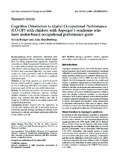Transcription of 8-Hour NAIC Long-term Care & Partnership Training
1 2008-2015 Sandi Kruise Insurance Training , Sandi Kruise Inc, All rights reserved. 8-Hour naic Long-term care & Partnership Training Sandi Kruise Insurance Training a division of Sandi Kruise Inc 1-800-517-7500 2008-2015 Sandi Kruise Insurance Training , Sandi Kruise Inc, All rights reserved. 1 Table of Contents Chapter One - Overview of Long-term care .. 2 Chapter Two - Long-term care Planning .. 27 Chapter Three Public Programs to Pay for Long-term care .. 41 Chapter Four Overview of Long-term care Insurance .. 98 Chapter Five - Long-term care Insurance Features, Benefits and Provisions .. 122 Chapter Six - Long-term care Insurance Premiums, Underwriting and Claims .. 154 Chapter Seven - Alternative LTC Financing Options .. 183 Chapter Eight - New National Partnership Initiative and The Deficit Reduction Act (DRA).
2 201 2008-2015 Sandi Kruise Insurance Training , Sandi Kruise Inc, All rights reserved. 28-Hour naic Long-term care & Partnership Training Chapter One - Overview of Long-term care This chapter provides basic information about Long-term care (LTC) and serves as the foundation for the subsequent chapters. After this chapter, agents should be able to answer the following questions: What is Long-term care (LTC)? How do people receive LTC assistance? How likely is that a person will need LTC? How much does LTC cost? Who pays for LTC services? What is Long-term care ? Long-term care (LTC) is a variety of services and supports to meet health or personal care needs over an extended period of time. The goal of Long-term care services is to help people maximize their independence and functioning at a time when they are unable to be fully independent.
3 long term care is care that people need because they can no longer perform everyday tasks (activities of daily living) by themselves due to a chronic illness, injury, disability or the aging process. long term care also includes the supervision they might need due to a severe cognitive impairment (such as Alzheimer s disease). While many people think of care in a nursing home when they hear the words Long-term care , there is a much wider array of services to support people who need Long-term care . Among them are in-home health care , adult day care centers, assisted living facilities, adult family care homes, continuing care retirement communities, and many others. In fact, most Long-term care is provided at home, either by paid providers like home health aides, personal care workers or nurses and therapists, or even by unpaid caregivers such as family or friends.
4 Long-term care differs from acute care in that LTC services are intended primarily to maintain health status, while acute care aims to improve or correct a medical problem. This type of care isn t intended to cure people. It is chronic care that they might need for the rest of their life. They can receive long term care in their own home, a nursing home or another long term care facility, such as an assisted living facility. People often confuse long term care with disability or short-term medical care . long term care is not: care that they received in the hospital or their doctor's office care they needed to get well from a sickness or an injury short-term rehabilitation from an accident recuperation from surgery 2008-2015 Sandi Kruise Insurance Training , Sandi Kruise Inc, All rights reserved.
5 3 Definition of LTC by Impairment Long-term care can be defined as the medical and non-medical support services needed by an individual with a prolonged illness or disability to perform activities of daily living (ADLs) or instrumental activities of daily living (IADLs). Activities of Daily Living (ADLs) Instrumental Activities of Daily Living (IADLs) Bathing Dressing Eating Using the Toilet Transferring Continence Grocery shopping Laundry Preparing meals Housework Managing medication Transportation Cognitive Impairment: loss in intellectual capacity ADLs are the activities people usually do during a normal day such as getting in and out of bed, dressing, bathing, eating, and using the bathroom. IADLs are activities related to independent living and include shopping for groceries, preparing meals, performing housework, managing medications, managing money, and using a telephone.
6 Activities of Daily Living (ADLs) Most Long-term care is non-skilled personal care assistance, such as help performing everyday Activities of Daily Living (ADLs), which are: The basic activities of caring for oneself: Eating Dressing Bathing Toileting (using the bathroom) Transferring (moving back and forth from a bed to a chair) Continence (the ability of the body to control urination or bowel movements or both) Insurance companies use the inability to perform a specified number of these ADLs to help determine eligibility for long term care insurance benefits. Cognitive Impairment Long-term care is needed when someone has a chronic illness or disability that causes them to need assistance with Activities of Daily. Illness or disability could include a problem with memory loss, confusion, or disorientation.
7 This is called Cognitive Impairment and can result from conditions such as Alzheimer s disease. 2008-2015 Sandi Kruise Insurance Training , Sandi Kruise Inc, All rights reserved. 4A deterioration or loss in intellectual capacity that results in impairment in some or all of the following: short and Long-term memory, orientation to people, place, and time, deductive or abstract reasoning (including judgment), and ability to perform activities of daily living. Insurance companies use standardized tests to measure cognitive impairment to determine eligibility for Long-term care insurance benefits. In 2005, nearly one-half (45%) of nursing facility residents had dementia, and 20% had other psychological diagnoses. Levels of long Term care Long-term care encompasses many different types of services, which are sometimes grouped into the following levels: Skilled care is medical or nursing care (such as help with medications, caring for bandages and wounds) and therapies (such as occupational, speech, respiratory, and physical therapy).
8 It is usually delivered by a nurse, therapist or other trained professional. Less than 15 percent of all persons who need LTC require skilled care . Personal care or custodial care is help with the ADLs, such as bathing and dressing. Most people who need LTC need personal care . Supervisory care provides monitoring and supervision, a safe or controlled environment, and stand-by help with ADLs to ensure that individuals do not harm themselves or others. Supervisory care is often needed because of a severe cognitive impairment. Risk of Needing LTC Anyone can need long term care at any time in their life. Currently, 40% of people receiving long term care services are working age adults, between the ages of 18 and Automobile and sporting accidents; disabling events such as strokes, brain tumors, and spinal cord injuries; and disabling illnesses such as multiple sclerosis and Parkinson s disease are examples of injuries and ailments that can happen to anyone at any age.
9 2008-2015 Sandi Kruise Insurance Training , Sandi Kruise Inc, All rights reserved. 5 The need for long term care is most often associated with issues of aging. However, anyone can need long term care at any time. Everyone is susceptible to accidents, chronic illnesses, and disabilities that may require assistance with routine daily activities for an extended period of time. Who Needs long Term care ? As people age and their average life span increases, the chances of needing long term care increase. After age 65, an American has more than a 60% chance of needing some form of long term care . In general, the longer someone lives, the higher their odds of needing long term care . Approximately 60 percent of individuals age 65 and older will require LTC at some point in their lives. About 43 percent will require nursing home care .
10 There are many factors that increase a person s risk, including those listed below. The probability of needing Long-term care services increases with So as America ages, all sectors of the health and Long-term care system state and federal, public and private are being asked to provide services to a growing population of older people with widely varying needs. More than two of five people age 65 or older (14 million) report having some type of functional limitation (sensory, physical, mental, self- care disability, or difficulty leaving home).2 Of these, six million are receiving Long-term care 1 O Brien, Ellen (2005). Long-term care : Understanding Medicaid s Role for the Elderly and Disabled. Kaiser Commission on Medicaid and the Uninsured, November, p. 1. 2 Census Bureau (2003).
















